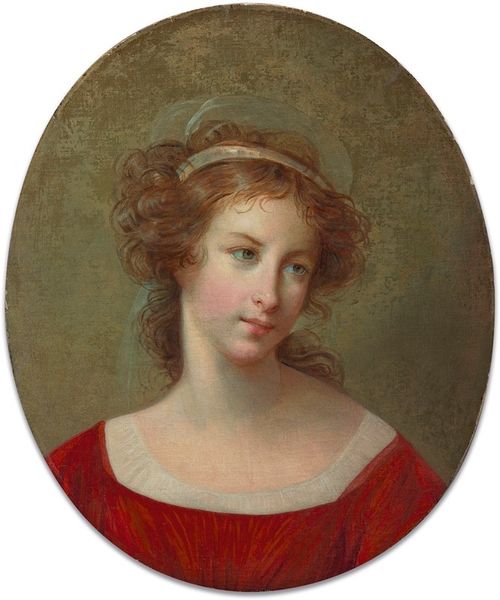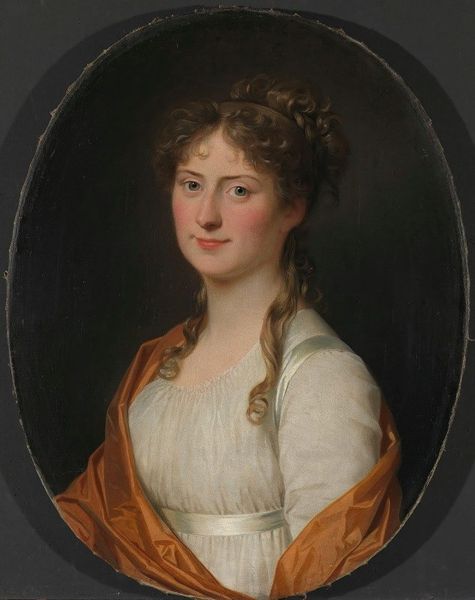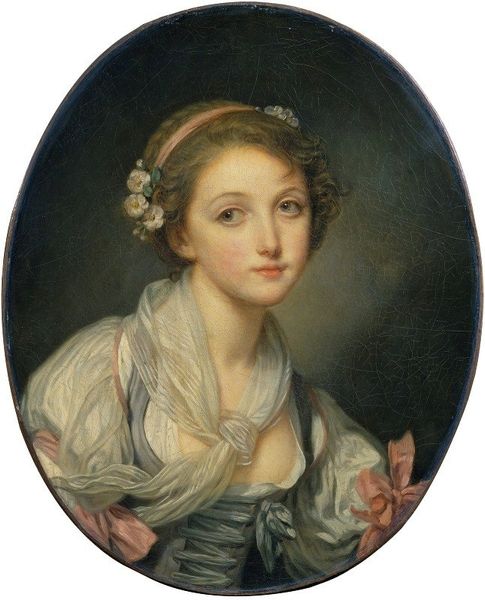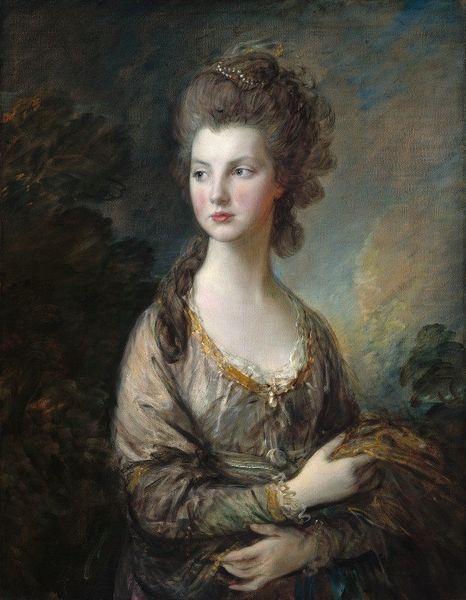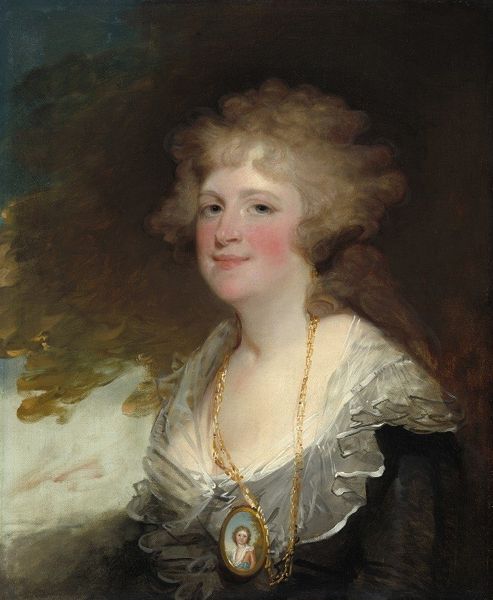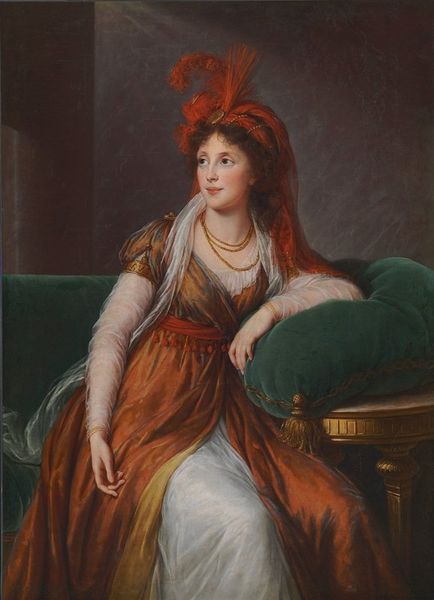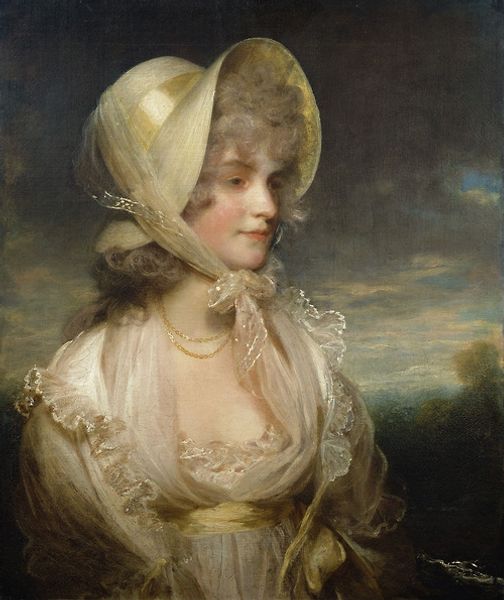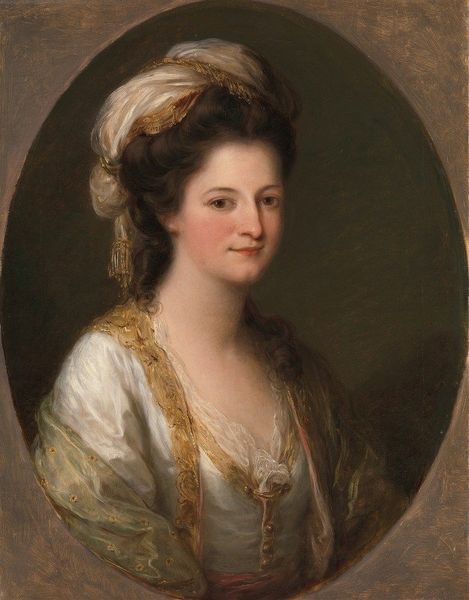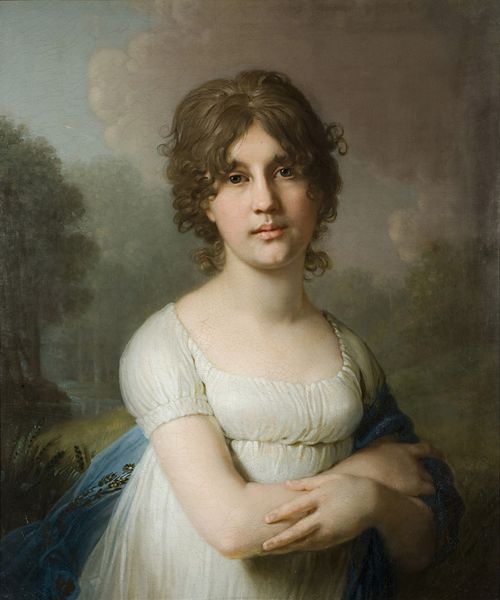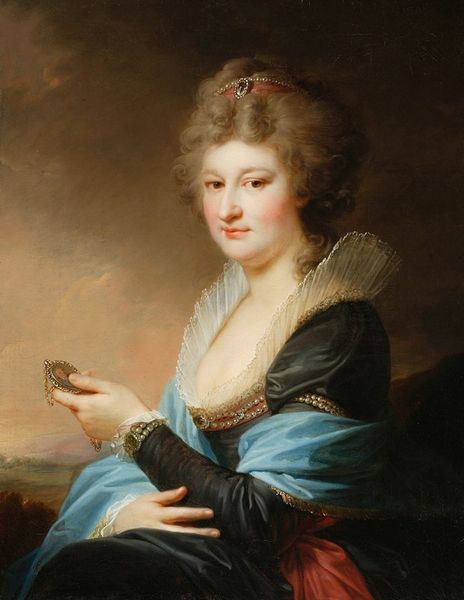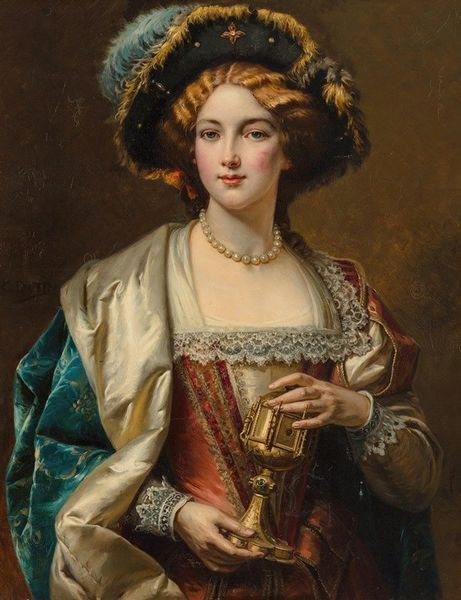
painting, oil-paint
#
portrait
#
painting
#
oil-paint
#
genre-painting
#
rococo
Copyright: Public Domain: Artvee
Curator: Looking at Angelica Kauffmann's "Woman in Turkish Dress" from 1767, the initial impression is one of serenity. There's a softness to the light, and the subject’s gaze seems both gentle and introspective. What do you see first? Editor: I am immediately struck by how this portrait engages with 18th-century orientalism. The "Turkish dress" isn't necessarily about accuracy but about European fascination with the "exotic" other. How does this relate to the larger artistic and societal trends of that time? Curator: Precisely. This "Turkish Dress" acts as a kind of masquerade, very fashionable during the Rococo period. There's a performative aspect to it. The soft colors, flowing fabrics and idealized features create a fantasy, removed from any true understanding of Turkish culture. That green headwrap is an eye-catcher too. Editor: Absolutely. Consider the symbolic weight of that headwrap. Historically, head coverings can represent many things—religious affiliation, marital status, or social class, to name a few. But in this context, within this "Turkish dress," it appears almost as a decorative element, adding to the overall exotic appeal and transforming the woman into an emblem of another world. Curator: Furthermore, Kauffmann's own position as a woman artist in a male-dominated field cannot be ignored. The power dynamic inherent in portraiture intersects with issues of gender and representation. Does Kauffmann's perspective challenge or perpetuate these power dynamics? Editor: It is an intriguing question! On the one hand, we can argue that by painting a woman in this guise, Kauffmann partakes in the orientalist spectacle. On the other, it may give agency to women through costuming. There is ambiguity in her intent. As an artist with considerable social power, what was Kauffmann saying with this piece, intentionally or unintentionally, about class and empire? Curator: These questions reveal how deeply entangled art is with the socio-political context in which it emerges. The “Turkish dress” is not just fabric but a charged site of cultural exchange, fraught with power imbalances and Western fantasies. Editor: Indeed, by considering both the visual symbolism and historical implications, we move toward a far richer understanding of how images operate as vehicles for memory, power, and cultural meaning. Thank you for enlightening me. Curator: Likewise, this exercise in interpreting historical depictions using contemporary frameworks helps challenge our presumptions. The dialogues of that era still speak, sometimes shouting, even today.
Comments
No comments
Be the first to comment and join the conversation on the ultimate creative platform.
